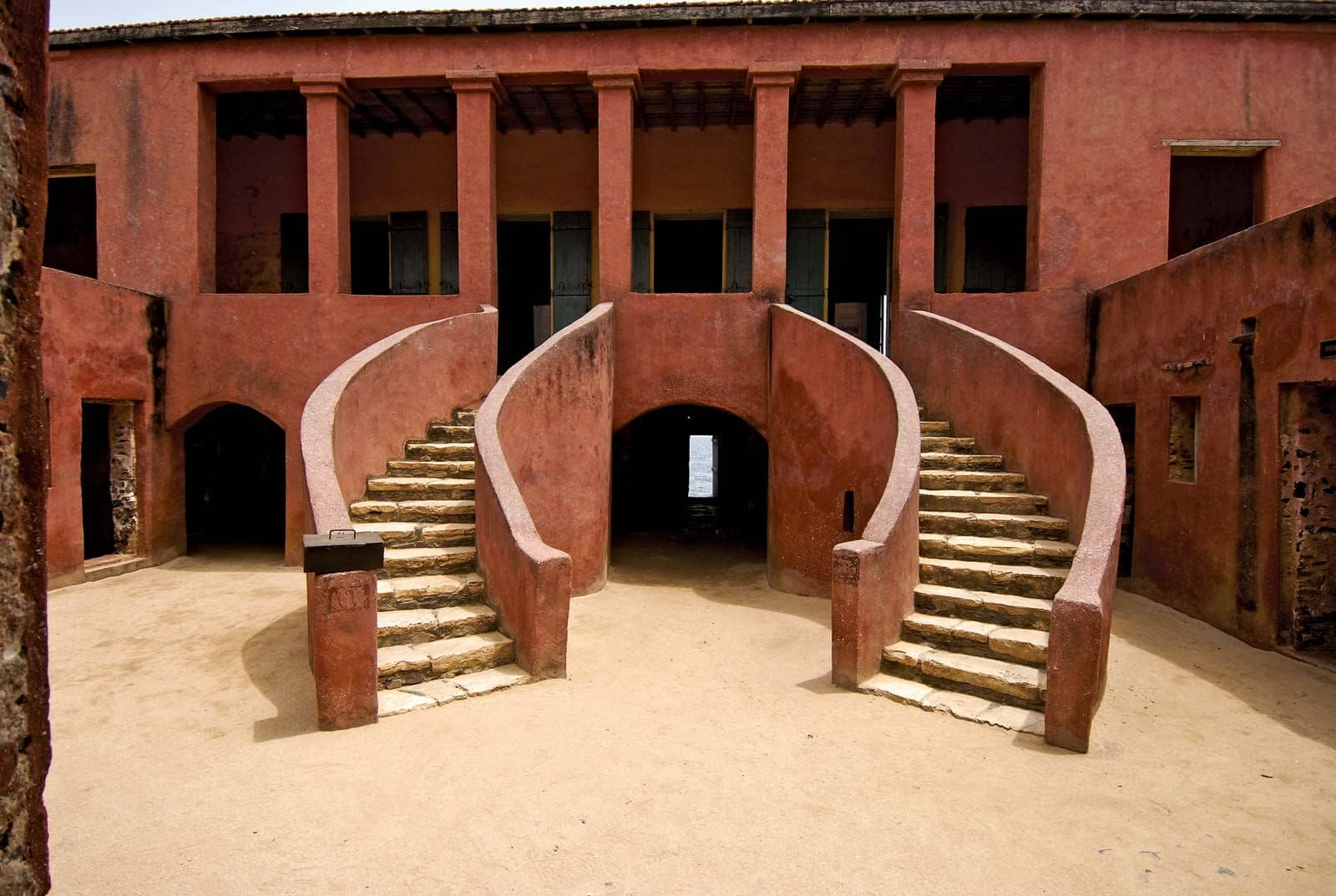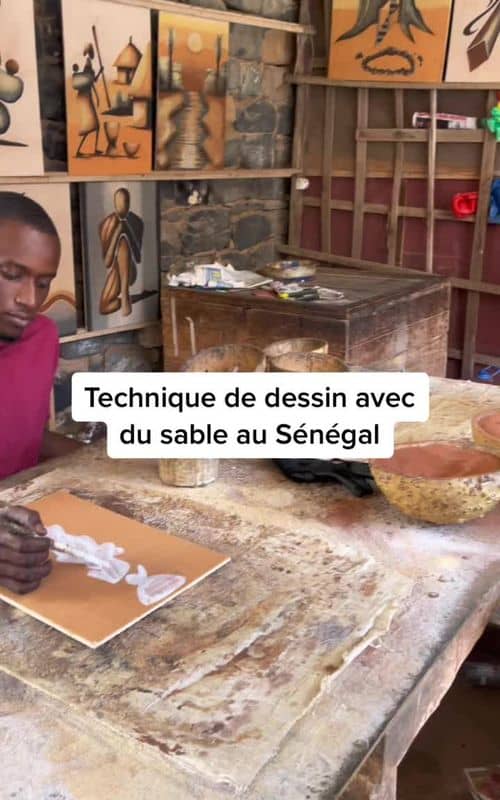Gorée Island
A UNESCO World Heritage site, Gorée Island is a poignant memorial to the transatlantic slave trade, offering a deeply emotional historical experience.

Highlights
Must-see attractions

Social
From TikTok & Reddit
Best Time
Fewer crowds, more reflective
Gorée Island
Best Time
Fewer crowds, more reflective

Highlights
Must-see attractions
A UNESCO World Heritage site, Gorée Island is a poignant memorial to the transatlantic slave trade, offering a deeply emotional historical experience.
"A must visit when in Senegal. Offers a deeply moving and unforgettable experience, rich in history and culture."
Emotional Preparation
Be ready for a deeply moving experience at the House of Slaves.
Hire a Local Guide
Guides offer invaluable historical context and personal stories.
Highlights
Discover the most iconic attractions and experiences

House of Slaves
Museum
A poignant and essential visit to understand the horrors of the slave trade and honor its victims.
Door of No Return
House of Slaves
The symbolic gateway where enslaved Africans were forced onto ships, a deeply emotional and unforgettable sight.

Island Streets & Colonial Architecture
Throughout the island
Wander through charming streets lined with colorful, centuries-old buildings, offering a glimpse into the island's past.

Sand Painting Artisans
Artisan shops
Witness the intricate art of sand painting, a unique local craft passed down through generations.
Plans like a pro.
Thinks like you
Planning Your Visit
Prepare for an Emotional Journey
Ferry Logistics & Island Life
Best Times
Insider Tips
from TikTok, Instagram & Reddit
Emotional Preparation
Be ready for a deeply moving experience at the House of Slaves.
Hire a Local Guide
Guides offer invaluable historical context and personal stories.
Ferry Schedules
Check ferry times; weather can impact departures.
Wear Comfortable Shoes
You'll be doing a lot of walking on uneven surfaces. :athletic_shoe:
Tips
from all over the internet
Emotional Preparation
Be ready for a deeply moving experience at the House of Slaves.
Hire a Local Guide
Guides offer invaluable historical context and personal stories.
Ferry Schedules
Check ferry times; weather can impact departures.
Wear Comfortable Shoes
You'll be doing a lot of walking on uneven surfaces. :athletic_shoe:
Support Local Artisans
Purchase sand paintings and crafts directly from artists. :shopping_bags:
What Travellers Say
Reviews Summary
Gorée Island is a profoundly moving and historically significant destination, offering a powerful glimpse into the transatlantic slave trade. Visitors are deeply impacted by the House of Slaves and the 'Door of No Return,' finding the experience emotional yet essential. While the island's beauty and local culture are appreciated, some find the food offerings to be mediocre.
"You CANNOT visit Senegal without going to Île de Gorée. The history of this place will get you so emotional. It’s a beautiful sure and full of magic and memories and history that demonstrates strength"
Lily Asongfac
"A must visit when in Senegal. Just a 30-minute ferry ride from Dakar, Gorée Island offers a deeply moving and unforgettable experience. Rich in history and culture, with beautiful streets lined with colorful, centuries-old buildings.
But beyond the beauty lies a powerful story — the island is home to the House of Slaves, one of the most important and heartbreaking reminders of Africa’s past. Visiting it is emotional, eye-opening, and necessary."
Gee-man
"Come prepared for an deeply emotional journey into Black history, uncovering the roots of the Slave Trade. The guides are very well informed, the island itself is just beautiful.
You'll probably make friends with a shopkeeper at the Dakar Port and she'll call you by name when you enter the market. Use that early meet to place your order because you won't have much time to shop if you're part of a big group tour.
The food is mediocre, honestly the only negative part of the trip. But the history lesson is well worth it."
Ercilia Ubisse
What People Like
What People Dislike
Frequently Asked Questions
🚇 🗺️ Getting There
Gorée Island is accessible by a 30-minute ferry ride from the port in Dakar. Ferries typically run frequently, but it's advisable to check the schedule in advance, especially as weather conditions can sometimes affect service.
The ferry cost is generally affordable, making it an accessible trip for most travelers. Prices can vary slightly, but it's a small investment for a significant historical experience.
No, Gorée Island is a car-free zone. Access is exclusively by ferry from Dakar. This contributes to its unique, pedestrian-friendly atmosphere.
Ferries usually depart regularly throughout the day from Dakar's port. It's best to confirm the latest schedule upon arrival at the port or through local inquiries, as times can change.
The ferry ride is generally safe, but can be bumpy or disrupted during rough weather. Travelers have noted instances where weather has created tense situations on the crossing.
🎫 🎫 Tickets & Entry
Tickets for the ferry to Gorée Island can typically be purchased at the port in Dakar on the day of travel. Advance booking is usually not necessary unless you are part of a large organized group.
While there isn't a general entrance fee for the island, specific attractions like the House of Slaves museum have a small admission fee. This fee supports the preservation of these historical sites.
The House of Slaves museum is generally open daily, but hours can vary. It's recommended to visit during daylight hours to fully experience the island and its historical sites.
Yes, local guides are highly recommended and readily available on Gorée Island. They provide deep historical insights and personal narratives that enrich the visitor experience significantly.
Absolutely. Gorée Island is a very popular day trip destination from Dakar, offering a profound historical experience within a few hours.
🎫 🧭 Onsite Experience
Visitors can explore the House of Slaves, the 'Door of No Return,' wander through charming colonial streets, visit local artisan shops selling sand paintings, and learn about the island's significant history.
Yes, Gorée Island offers many picturesque spots with its colorful colonial architecture and ocean views, making it a great location for photography.
Gorée Island was a major hub for the transatlantic slave trade from the 15th to the 19th century. It stands as a powerful symbol of human suffering and resilience.
Comfortable walking shoes are essential as you'll be exploring on foot. Light, breathable clothing is recommended due to the tropical climate.
While the history is heavy, families can visit. It's an opportunity for older children to learn about history. Be prepared to discuss sensitive topics.
🍽️ 🍽️ Food & Dining
The food on Gorée Island can be a mixed experience. While some visitors find it mediocre, others enjoy local meals and fresh fish at reasonable prices, especially in local eateries.
There are restaurants and local eateries on the island offering Senegalese cuisine. Fresh fish is often a highlight. Prices can be slightly higher due to its tourist status.
Vegetarian options might be limited, but it's often possible to find vegetable-based dishes or request modifications at local restaurants. Inquire with your server.
Look for fresh grilled fish, a common and delicious offering. You might also find traditional Senegalese stews or rice dishes.
Compared to European prices, dining on Gorée Island is generally considered very affordable, especially if you opt for local establishments.
📸 📸 Photography
The colorful colonial buildings, the 'Door of No Return,' the ocean views, and the narrow, winding streets offer fantastic photographic opportunities.
Generally, photography is allowed, but always be respectful, especially when photographing people or inside sensitive historical sites like the House of Slaves. Ask permission when in doubt.
A versatile lens (like a 24-70mm) is great for capturing street scenes and architecture. A wide-angle lens can be useful for the expansive ocean views.
Early morning or late afternoon light offers softer, more flattering light for photography, avoiding harsh midday sun.
Drone usage may be restricted due to the historical and residential nature of the island. It's best to check local regulations before flying a drone.
For Different Travelers
Tailored advice for your travel style
👨👩👧 Families with Kids
Beyond the historical sites, the island's colorful streets and artisan shops can be engaging for younger visitors. Encourage them to observe the sand painting artists at work. The ferry ride itself can be an adventure. Ensure children wear comfortable shoes for walking and stay hydrated. Consider a local guide who can tailor their explanations to be more age-appropriate, focusing on the broader historical narrative rather than solely the traumatic aspects.
🤔 Budget Travelers
To save money on food, opt for local eateries rather than more tourist-oriented restaurants. Fresh fish and local dishes can be found at reasonable prices. Instead of booking expensive guided tours, consider hiring a local guide directly on the island; their rates are often negotiable and provide excellent value for the historical insights they offer. Walking is the primary mode of transport, so no additional costs there.
Deep Dives
In-depth insights and expert knowledge
The Profound History of Gorée Island
Beyond the House of Slaves, the island itself tells stories through its colonial architecture and cobblestone streets. Walking through these areas offers a tangible connection to the past, allowing visitors to imagine the lives of those who lived and suffered here. The sand painting artisans also contribute to the island's cultural fabric, showcasing a unique local art form that has been passed down through generations.
Understanding Gorée Island requires an emotional openness. Many visitors describe the experience as hauntingly beautiful and profoundly moving. It's a place that demands reflection, offering a crucial historical lesson that resonates long after departure. The island serves not just as a historical site, but as a powerful symbol of remembrance and the enduring spirit of humanity.
Navigating Gorée Island: Practicalities and Local Life
Life on Gorée Island continues for its residents, making it more than just an open-air museum. You'll encounter local artisans selling their crafts, particularly the intricate sand paintings that are a specialty of the island. Engaging with these artists and perhaps purchasing a piece can be a rewarding experience. The island also offers opportunities to eat local meals, with fresh fish being a popular choice, though some reviews suggest the food quality can be inconsistent. Embracing the local pace and interacting with residents can significantly enhance your visit.
When planning your visit, comfortable walking shoes are a must, as you'll be navigating cobblestone streets and uneven paths. While the historical significance is paramount, remember that Gorée Island is a living community. Respectful photography is encouraged, but always be mindful of local customs and ask permission before photographing individuals.
Social
from TikTok, Instagram & Reddit